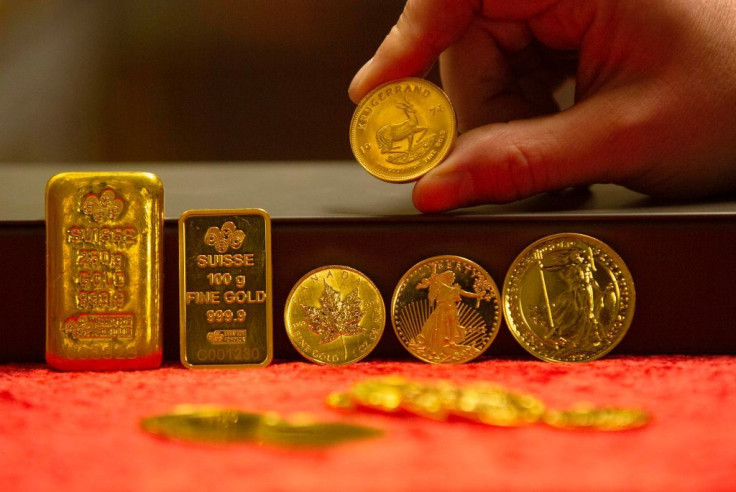Gold Is Best Investment For Global Market, Hedge Fund Expert Says

Good old gold hasn’t lost its sheen as the go-to investment when markets start to tank or display erratic behavior due to reasons such as politics.
Persistent talk president Donald Trump is moving to devalue the U.S. dollar to boost the economy is focusing the spotlight on gold as the last resort investment. One more reason to flee to gold: the upcoming move by the U.S. Federal Reserve to cut its benchmark interest rate by at least a quarter point.
Billionaire Ray Dalio, founder of Bridgewater Associates, one of the world’s largest hedge funds, said the frenzy among investors for stocks and other assets with equity-like returns is blinding them to the painful reality securities are in for a period of diminishing returns. Dalio’s hedge against this outcome -- gold.
Dalio noted most investors are underweighted in assets such as gold. He contends that if investors want to have better balanced portfolios to reduce risk, they need to have more of this sort of asset.
“For this reason, I believe that it would be both risk-reducing and return-enhancing to consider adding gold to one’s portfolio,” suggests Dalio.
As might be expected, the price of gold jumped higher after Dalio published this message. It rose 0.7%, around $1,421 an ounce.
Dalio noted the Fed’s move to lower rates, which we might see by the end of this month, follows a three-year cycle of raising rates from the very accommodative near-zero levels implemented during the financial crisis that began in 2008.
He contends there’s a new “paradigm shift” in the offing and investors are going to have to change their mindset about what will work due to the current bull market run in Wall Street, which is the longest in its history.
This paradigm shift follows a decade of the Fed and many of its global counterparts suppressing interest rates and resorting to quantitative easing (the purchase of bonds and other financial assets) to spend their way out of the Great Recession. These controversial solutions boosted risk-taking and this has helped holders of financial assets.
Quantitative easing, however, led to a jump in corporate and government debt, forcing the Fed and other central banks to keep interest rates low. The Fed then launched a program where it tried to normalize policy.
That lasted for all of a year and the Fed is now expected to embrace easing again as it cuts rates and slows down the reduction of bond holdings on its balance sheet.
Dalio said central banks have to help the debtors relative to the creditors. He also argues the forces of easing behind this paradigm, which are interest rate cuts and quantitative easing, have diminishing effects.
The result will be accelerating the monetization of debt and currency depreciation. Both factors will reduce the value of money and real returns for creditors. It will also test how far creditors will let central banks go in providing negative real returns before moving into other assets such as gold.
© Copyright IBTimes 2024. All rights reserved.




















